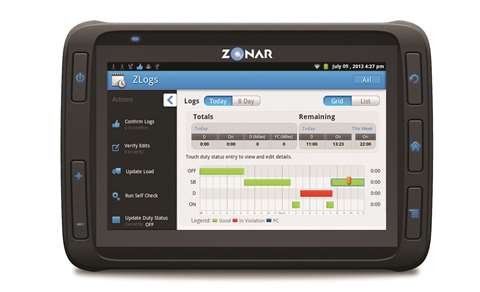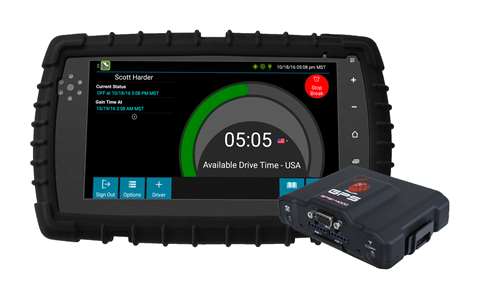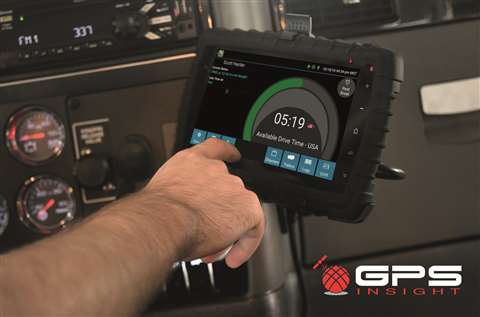De-mystifying ELD rules
18 October 2017

The December, 2017, electronic logging device (ELD) compliance date is only two months away, and many companies, including specialized carriers and crane companies, are likely asking themselves, “Are we fully prepared?” Perhaps your company has its ducks in a row, and the stress of ELD implementation is in your rear-view mirror. For your sake, I hope so. If not, read on.
De-mystify the rules
One of the first steps should be for your company to ‘de-mystify’ the ELD regulations. The rules are detailed, complex and daunting for many companies. But, they can be simplified and broken down into bite-size pieces. The ELD regulations do six things. They establish:
Minimum performance and design standards for ELD devices, which allow them to accurately record a driver’s hours-of-service;
- A first-of-its-kind requirement for ELD suppliers to register with FMCSA, and self-certify to FMCSA and industry that their ELD meets the performance and design standards;
- Rules requiring use of a certified ELD by drivers operating in interstate commerce who are currently required to prepare a “record of duty status,” (or RODS–the government term for a paper log);
- A two-year grandfather period from December 2017 to December 2019, for companies that have installed and are using automatic on-board recording devices (meeting the older Section 395.15 standards) before December 18, 2017;
- Streamlined “supporting documents” rules for keeping and filing other business records (e.g., bills of lading, truck fueling records, payroll records, etc.) that can be used to verify the information on a driver’s ELD record; and,
- New rules prohibiting companies from using ELD information to harass (i.e., force) drivers into violating hours-of-service limits or to drive while fatigued.

The regulations also include four specific ELD exemptions for certain types of drivers and carriers. Again, in bite-size chunks for simplicity sake, the rules exempt:
- Short-haul drivers (100 and 150 air-mile radius drivers) who use the time card exception and, therefore, don’t keep paper logs.
- Drivers who are required to keep paper logs no more than eight days during any 30-day period.
- Driveaway-towaway drivers (transporting a vehicle for sale, lease, or repair), provided the vehicle driven is part of the shipment, or the vehicle being transported is a motor home or recreational vehicle trailer.
- Drivers of vehicles manufactured before model year 2000.
While these points summarize the rule and exemptions, companies are well-served if one or more people with safety, compliance and driver training responsibilities take the time to read: (a) the actual language of the ELD rules in Part 395 of the Federal Motor Carrier Safety Regulations (the language is only about five pages); and, (b) the 20 pages of FMCSA’s ELD “Frequently Asked Questions” document. Links to both are included at the bottom of this article. Note: While reading the rule language itself may not de-mystify the ELD rules, reading FMCSA’s Frequently Asked Questions document will go a long way in doing so.
Train your team
Training, while not required by the new ELD rules, is a practical reality and a very good idea! Even if your drivers have used some type of electronic logging system for years, ELDs capture more data, and the rules governing use and data transfer are new. Training is critical and, at a minimum, it should include drivers, safety and compliance personnel, maintenance staff and operations and dispatch staff.

Your team will need to become intimately familiar with these items, and more:
- the functions of the ELD and the login and logout processes
- the methods for changing duty status from automatically captured driving time to on-duty, not driving (line 4), off-duty (line 1) and sleeper berth status if applicable (line 2)
- how the special driving categories of “personal conveyance” and “yard moves” are activated, if authorized by your company
- what data is automatically recorded and what information that must be manually entered by the driver
- how the required data must be shown or transferred to a law enforcement officer, upon request
- how to edit and annotate the ELD record when mistakes are made
- what to do if/when the ELD malfunctions
- how to log a driver out of the ELD system when he/she forgets (this will happen!)
- how to handle and “reconcile” any “unassigned driving time” captured by the ELD
what additional business records must be kept in order to help company and government personnel verify ELD record information.
It’s hard to overstate the importance of training. It’s critical to implementation success.
Update policies/procedures
Reviewing and updating company policies and procedures is an important step. Most companies have formal safety and compliance-related policies and procedures, and they should be reviewed and updated as part of ELD transition. These issues should be considered during this policy review process:

- Use of trucks by drivers while off-duty. Does your company have or need a policy allowing it?
- Moving trucks on a yard. Does your company have a policy on drivers and non-drivers (e.g., mechanics) moving trucks on a yard?
- Unassigned driving time. Does your company have a policy and procedure on who will handle the responsibility of assigning driving time when a truck is moved without someone being logged in?
- Editing of ELD records. Drivers will make mistakes while using ELDs, and many of them will be honest mistakes. Does your company have a policy on who will make needed edits – drivers or company staff? What if a driver wants to edit his/her ELD record days after it was submitted?
- ELD malfunctions. Who is responsible for working with your ELD supplier when an ELD malfunctions?
This list is intended to get you thinking about current policies and procedures that may need to be updated, and new company policies that may be needed. Ideally, policy updates would be completed before, and included in, the training provided to company staff.




